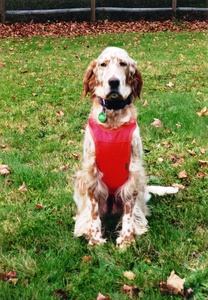As interest grows in the field of therapy dog visiting, the need for instruction has evolved. There are skills and techniques used by the handler and dog while visiting with patients, nursing home residents, children in educational environments, hospice patients, and other settings that, if learned ahead of time, can be very helpful and make visits more enjoyable for all involved.
Two years ago, I saw the need arise for such instruction and developed beginner and advanced classes designed to help those ready to embark on this type of volunteer work with their dogs. After having run the classes for two years, I’ve found that those who have attended are far more prepared for a therapy dog evaluation. They know what to expect.
The beginner class focuses on what makes a good therapy dog, and the beginner’s first and second steps in the training process. I start my classes by asking the participants the following three questions:
1) Has your dog ever shown signs of aggression?
2) Is your dog predictable?
3) Is your dog totally controllable?
The answer to #1 MUST be NO. A dog simply can not be a therapy dog if he or she shows signs of aggression toward people. This question must be answered honestly by the owner. You are responsible for your dog at all times and are liable for his or her behavior.
The answer to #2 MUST be YES. You, the dog’s owner, must be able to predict that your dog won’t bite someone, won’t bark incessantly while visiting a facility, won’t have an accident on the carpet when he or she gets excited, won’t jump up on someone’s lap uninvited or lick a patient’s face.
The answer to #3 is where the training comes in… we help teach you to train your dog to be totally controllable. This is your job. If you want to do this type of volunteering, you must work with your dog until you feel he or she is completely under your control. It’s really not work, it’s FUN! This is what builds the bond between you and your dog. A well-trained dog, is a happy dog. Dogs really want to please you. They want to know what’s expected of them by their owner.
Training starts with socialization. Socializing your dog is the most important thing you can do, whether you plan to do therapy dog visits or just want a happy, well-adjusted companion that’s not aggressive or timid when family and friends come to visit. See full discussion on socialization in: How best to prepare your puppy to be a therapy dog.
With the understanding that socializing your dog – puppy or adult – is key to building a successful relationship with your dog, and it’s something you do continuously throughout your dog’s life, we then move onto Basic Training.
The basic obedience commands of: sit, down, stay, come, heel must be solid – REALLY solid. This is where the training starts… and hopefully, you’ve already been working on these before coming to this class which focuses on the skills and techniques used in therapy dog visiting – which are beyond these basic commands. PRACTICE, PRACTICE, PRACTICE – all the time. Not just 20 minutes a day. Put your dog in a down-stay in front of his food dish, then tell him he can have it. Have your dog sit-stay before he can go through the open door. Take daily walks with your dog in heel position. This is not an exercise walk, this is a controlled walk-at-your-side walk. Make all this fun. And, don’t forget the treats, plenty of them. Your dog will LOVE the attention and direction you are giving him. When you feel you are ready to head out for a therapy dog evaluation, these basic commands must be solid. Your answer to question #3 – Is your dog totally controllable? must be YES.

Cynthia, this is an excellent post. I meet people in Boston all the time who are wondering if their dog could be a therapy dog and how would they start preparing their dog for training